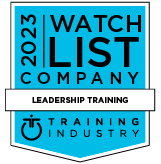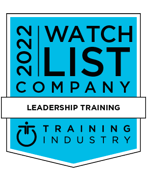How to Develop High Potential Leaders to Future Executives

Contents
“Despite costing more, external hires perform worse and quit more. Promoting from within fuels individual growth and collective success." – Adam Grant
Identifying potential executives and mentoring high potential employees is the single greatest talent management challenge facing organizations today.
Studies show 71% of employees believed hiring from within is better for scaling a business. Nearly two-thirds believed promoting within beats hiring externally and were two times more likely to say they prefer being managed by someone promoted internally (66%) versus hired externally (34%).
Identifying High Potential Leaders
The problem is most businesses aren’t very good at building effective leadership teams. High performing teams need high performing leaders. 74% of companies are identifying potential executives based on performance appraisals and 68.5% based on recommendations from management (CCLInnovation).
Performance measures are often biased by politics and, as we all know, a skilled politician does not always make an effective leader. What’s more, only 30% of high performers are also high potential leaders (Hogan).
They can easily slip under the radar if they’re in a role that doesn’t challenge them, or that they’re new to and need a little talent nurturing to get to the next level. That’s why it’s essential to assess potential, not just performance. Otherwise, your high potential leaders will stagnate and leave for somewhere that does spot their potential, assess their ambitions, and offer support to get on the right track. So it's important we make sure our high potential leaders are really high potential.
High potential leaders – also referred to as ‘emerging leaders’, the ‘leadership pipeline’ and ‘talent bench’ – have several notable characteristics. They have a strategic perspective, jump at opportunities, and take initiative.
IQ gets you in the door, but a high EQ gets you promoted.
The number one reason for managerial derailment is relationship problems (Hogan Assessments), so emotional intelligence is another early indicator of a high potential leader.
High potential leaders inspire and motivate others, and contribute to a collaborative, positive atmosphere. They show imagination, flexibility, resilience, and an eagerness to develop new skills. They also recognize hard work and the importance of constructive feedback.
Executive Coaching
Executive leadership training isn’t just about stimulating the career growth of the leader. It’s about empowering the organization with the leadership it needs to grow and succeed, and ensuring every leader is achieving the maximum impact.
Executive coaching not only enables leaders to better understand their strengths, weaknesses, and blind spots, but it helps them assess the same for their organization and set realistic objectives to improve upon those weak points, such as improving diversity and inclusivity.
Mentoring high potential employees unlocks a growth mindset, to help leaders learn flexibly, think creatively, and see challenges as opportunities for growth rather than something to fear. Executive leadership training provides leaders with the skills to smoothly guide a business through periods of vast change and uncertainty, such as a recession, succession, company acquisition, or a shift to remote work.
Mentoring high potential employees also results in increased emotional intelligence and self-awareness and cultivates empathy. This helps leaders create a psychologically safe space where employees feel comfortable in sharing their ideas and emotions, especially if they’re feeling stuck or unsure. They know their leader will look to understand and support them.
Developing Soft Skills
77% of HR professionals said developing soft skills was key to their organizations’ future plans (SHRM), so that high potential leaders can become culture ambassadors and think strategically – at the same time!
However, enhancing soft skills can only be done in an experiential leadership training environment. It’s like riding a bike – you won’t learn how to do it properly reading from a book about bike riding.
Experiential leadership training gives leaders the opportunity to navigate real-world leadership challenges and reflect on the decisions they make within the safety of controlled simulations. It gives your leadership pipeline the opportunity to find new solutions to problems and reflect on their emotional responses. Learning by feeling, as well as doing, develops a broad perspective of leadership and management and gives leaders the confidence to react quickly and effectively to real-world leadership challenges.Key leadership competencies that high potential leaders should develop, and strategies for enhancing those soft skills:
Soft Skill/ Leadership Competency |
Description |
Enhancement Strategies |
Emotional Intelligence |
The ability to understand, manage, and use emotions effectively in personal and professional settings, to develop a psychologically safe space. |
|
Communication |
The ability to convey information and ideas clearly and effectively, both verbally and in writing. |
|
Collaboration & Teamwork |
The ability to work well with others, foster co-operation, and build strong relationships. |
|
Adaptability & Resilience |
The capacity to adapt to change and overcome challenges with a positive attitude. |
|
Empathy |
The ability to understand and share the feelings of others, fostering an inclusive environment. |
|
Informal Feedback and Communication
4 out of 10 workers lose engagement if no feedback is given (OfficeVibe). Offering different types of employee feedback shows you’re personally invested in future executive development, and it’s a key ingredient in unlocking their potential.
When delivered the right way, informal feedback is an invaluable tool for continuous improvement, implementing changes and encouraging open and honest two-way communication – an essential ingredient in any successful relationship and organization.
Both skills link to self-awareness. According to IO psychologist, Tasha Eurich, 10 – 15% of people are truly self-aware, although 95% of people think they are. She scientifically links high self-awareness with higher performance, more promotions, and most importantly, more effective leadership. Continuous feedback drives self-awareness and continuous improvement in future executive development.
Keeping the Good Ones
Talent nurturing creates a leadership pipeline that can really take the reins and uphold a healthy culture, where transparency and communication ensures everyone feels valued, listened to, purposeful, and engaged in their roles. It creates high potential leaders equipped with the invaluable skills to establish a healthy feedback loop and coach and develop others – and happier employees means higher retention.
Effective corporate succession planning is an essential element of talent nurturing and future executive development. It:
- Increases the availability of capable individuals prepared for an executive transition.
-
Promotes long-term planning and big-picture thinking.
-
Provides HR departments with a guideline for recruiting and development.
-
Reduces recruiting and hiring costs.
Give your high potential leaders the right tools.
Our Simulation for High Potential Leadership Development uses a combination of neuroscience and experiential learning to throw them in at the deep end with real-life strategic exercises.
Get in touch to learn more about identifying potential executives and building effective leadership teams.
Insights

Subscribe to Our Monthly Newsletter!
For managers and talent professionals who truly believe in putting people first, the CARE to Win blog is your gateway to the latest insights on human-centric leadership. Join us as we champion the people first movement.
Need some time apart? Are we emailing you too often? Just give us your feedback, and we promise we’ll respond. We really do care. And if it’s still too much, just unsubscribe. It’s cool.


